
Shells
Used in Making Ni'ihau Leis
"Lei Pupu 'o Ni'ihau"

|
"A
Niihau Shell lei is an intricate, individual, hand-sewn perpetual lei
made from the tiny shells which populate the beaches of Niihau Island,
and each piece of jewelry is unique owing to the selection of shells and
the artisan who creates with them..."
``````` |
||
|
The
Three Main Shells Used
(Click on Shells for More views) |
||
|
Leptothyra
verruca |
||

|
Clasp
Shells
|
||
| A
number of cowries are used by Ni'ihau lei maker. Most often they are used
for the clasps on the necklaces. Leho is the general name for cowry shell.
On Ni'ihau poleho or poleholeho is a small sized cowry. Poleho is also used
to indicate a dark or burnt color. http://www.hoalahawaii.com/nalei/naleiawal.htm Reference: Ka Lei, The Leis of Hawaii by Marie A. McDonald) |
||
|
Cypraea (Staphylaea)
granulata granulata Common Name: |
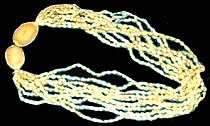 |
|
|
Cypraea caurica Common Name: |
||
|
Cypraea isabella
|
||
|
Architectonicidae Common Name: |
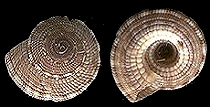 A. Bourquin Col. # 2-146 |
|
|
Architectonicidae Common Name: |
||

|
Miscellaneous
Shells used in Ni'ihau Leis
|
||||
|
||||
|
Chlamys
irregularis Hawaiian
Name: "Olepelepe: A delicate shell, 'Olepelepe comes is a variety
of pastel colors. These shells are typically used in hatbands or other
flat laying leis. The shells are paper-thin, a challenge to pierce and
sew..."
|
||||
|
Nodipecten
langfordi (Lyropecten langfordi )
|
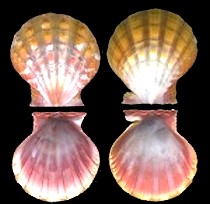 Nodipecten langfordi Lyropecten langfordi (Bartsh & Rehder,1938 ) 31 mm. A. Bourquin Col. # 86 |
|||
|
Turbo sandwicensis |
 A. Bourquin Col. # 2-254 |
 A. Bourquin Col. |
||
| "
Kamoa ('alilea) The very young, small turbos are used in leis or the larger ones are cut down with fingernail cutters until only the yellow tip of the spire is left. These spire tips are strung through a hole that is punched out through the stop. Leis of only these spire tips are rare and unbelievable. Usually pupu kamoa is used to add interest to leis of other shells. The spire tips resemble the yellow spores of the primitive plant called moa, thus the name, kamoa. ) http://www.hoalahawaii.com/nalei/naleikamoa.htm |
||||
| Puka Shells: This is actually the base of a beach worn or hand sanded cone shell. These may be found next to the clasps of the necklace |
 |
 http://www.ittventures.com /trade/leis/shell/blue.htm Lost Link |
||
|
Melampus
castaneus |
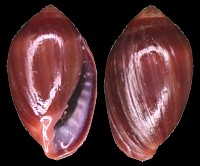 A. Bourquin Col. |
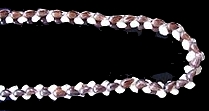 I have not been personally able to verify that this shell is used in genuine Ni'ihau jewelry. AB |
||

|
Law
affirms identity of Niihau shell leis
New standards on craftsmanship and materials must be met http://starbulletin.com/2004/05/29/news/story8.html |
|
|
Facts
on Ni'ihau shell leis
|
|
|
Web
sites used for developing these pages
|
|
|
Book: Ni'Ihau Shell Leis http://www.alibris.com/search/books/qwork/4688135/used/Niihau%20shell%20leis |
|
Miscellaneous
Ni'Ihau Shell Leis Links |
|
|
Miscellaneous
Ni'Ihau Links |
|